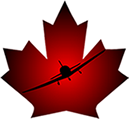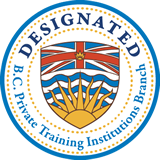 |
|
Landing: Part V, Landing Roll“You got to be very careful if you don't know where you're going,
because
you might not get there.” As Wolfgang Langewiesche reminds us, “More airplanes are wrecked during the landing run than during any other manoeuvre.” (1) Unfortunately, many pilots seem to operate under the assumption that once the wheels of the aircraft are in contact with the ground, the landing problem has ended. Nothing could be farther from the truth particularly when flying a conventional gear aircraft. While tricycle gear aircraft are more resistant to ground looping and many other negative results of poor handling, they are still subject to serious, potential difficulties once the wheels have made contact with the landing surface. This is not the moment to take a holiday from piloting. Here we are, after all, at that perilous zone: the edge of the air. At the moment of touchdown, we find ourselves in contact with the landing surface; we are not, however, finished with the flight. The wings still support a significant portion of the weight of the aircraft, the control surfaces—aileron, elevator and rudder—are still providing a significant portion of the directional control, and the aircraft is still in possession of significant kinetic energy in proportion to its mass and velocity (2). Our task now is threefold. We must maintain directional control of the aircraft, we must direct the transfer of the aircraft’s weight from its wings to its wheels in a gentle and controlled manner, and we must control the conditions allowing the aircraft to dissipate its residual kinetic energy. All of these tasks must be accomplished before we reach the far end of the available landing surface. The two most common results of failing to maintain control and achieve a safe landing roll, as portrayed in TSB accident reports, are runway excursions and runway overruns. Neither is a desirable outcome. These are not words we ever want to hear or read describing one of our landings. In a no-wind or direct headwind situation, our problem is simpler than when we must deal with crosswinds. However, as most light aircraft pilots will tell you, it’s a rare event to land with absolutely no crosswind component to the ambient breeze. For those folks flying light taildragger aircraft, a lunch customer sneezing on the patio of the airport café can provide sufficient crosswind to be noticed. Maintaining directional control during landing roll is critical to the safety of the flight. Each year we read accident reports involving runway excursions or runway overruns, cases where pilots have failed to maintain directional control of their aircraft and have left the runway or landing surface for greener pastures, or worse, for water-filled ditches. Been there, done that; exciting, but not so much fun. The challenge of maintaining directional control during the landing roll is increased by such factors as a rough or uneven surface, water, snow, ice or debris, crosswinds, too much speed on contact, and the changing dynamics of control systems as the aircraft slows. The only real choice we have concerning the landing surface is whether or not we choose to set our wheels on it. If we have made that choice, awareness of the potential difficulties and preparation to respond to those difficulties can reduce our hazard potential greatly. Surprise is not our friend. An unobserved badger hole can provide more entertainment than we might have chosen. Just because the wheels have touched the surface, however, we are not committed to continue with the landing. It may be, for example, an excellent plan, if the surface turns out to be more challenging than we can handle or feel comfortable with, to add power and abort the landing rather than carry on into a marginal or dangerous situation. How important is this particular landing anyway? We are not always as perceptive as we might hope; aborting a landing, even at this last stage, can save us time, money, embarrassment, or worse. In aviation, we are in a constant process of weighing benefit against risk. What may be an acceptable decision and assumption of risk for an experienced pilot flying a medivac sortie may not be at all acceptable for you or me out for a picnic lunch stop on a sunny, Sunday afternoon. At the moment our wheels touch, we are still effectively in flight. The wings are supporting the aircraft and our flight controls allow us to guide it. Keep flying. As the aircraft slows, lift decreases, and kinetic energy decays; we are transferring weight from the wings to the wheels and directional control from our flight controls to our wheel steering systems. We may still require flight control inputs, particularly in crosswind conditions, but the landing gear begins assuming greater and greater authority as the weight of the machine transfers. With a tricycle gear aircraft, except in exceptional conditions, we prefer to keep the nose wheel off the surface as long as practical. Extra drag produced by the higher angle of attack assists the aircraft dissipate its kinetic energy gently; keeping the nose wheel off the surface until the aircraft has slowed helps reduce impact and extends the life of those vulnerable parts that must support the nose once the aircraft has fully transferred its weight to the landing gear. With a tailwheel aircraft, if we have executed a three point landing, we will dissipate most of the aircraft’s kinetic energy prior to touchdown. This is one of the arguments in favour of the three point landing. We have kept the aircraft flying until its will to fly is pretty much gone. Our task then is simply to keep the machine aligned with its landing path with rudder input and, if absolutely required, with brake. The critical factor here is to make sure the little beast has had time to get finished with flight before we let it settle to the earth. Think about landing a 20-pound spring salmon using 3 pound test line. Patience is a great virtue. Once the wheels have touched, or even moments before, we gently pull the stick full aft to ensure the tailwheel is firmly in contact with the surface and the wing is at an angle of attack at or very close to the critical angle of attack for stall. Any excess lift will simply carry us back into the air with the whole touchdown process to be done again. In a wheel landing, we can make contact with the surface at a higher speed than would be acceptable with a three point landing. We must keep in mind, however, that the machine still has quite a bit of fight left in it even though it is in contact with the ground. At the moment of contact, lower the nose to reduce the angle of attack and keep flying, keep flying, keep flying. Use rudder and aileron to help maintain directional control as kinetic energy decays; use elevator to keep the main gear firmly on the ground. The prime argument for using a wheel landing is the higher speed of the aircraft at ground contact. This gives the flight directional control systems positive authority during the ground roll until the aircraft has slowed. As speed and energy decay, the elevators eventually lose their authority to keep the tail up and the aircraft will settle to its three point attitude. Remember, gyroscopic precession resulting from a change in the plane of propeller rotation will cause the machine to yaw to the right as the tail settles. Be ready for this event so you will not be surprised and end up, as my friend Charlie would say, “somewhere out in the rhubarb patch. Once the tailwheel has settled to the ground, full back on the stick will keep it there and directional control will be achieved with use of rudder and, if required, brake. The ground roll portion of the landing is the last and final phase of the process. If executed with grace and skill, it is a very pretty sight and a confidence builder for the pilot. Poorly executed, it can become a shambles and result in some very embarrassing and expensive outcomes. If you develop a mindset that the machine is “in flight” from the moment the tie-downs are cast off until they are once again firmly in place, it may save you considerable surprise and, perhaps, unnecessary grief. Focus and attention on the landing roll is an opportunity to fully enjoy each and every moment of this delightful experience we call flight. Notes:
|


